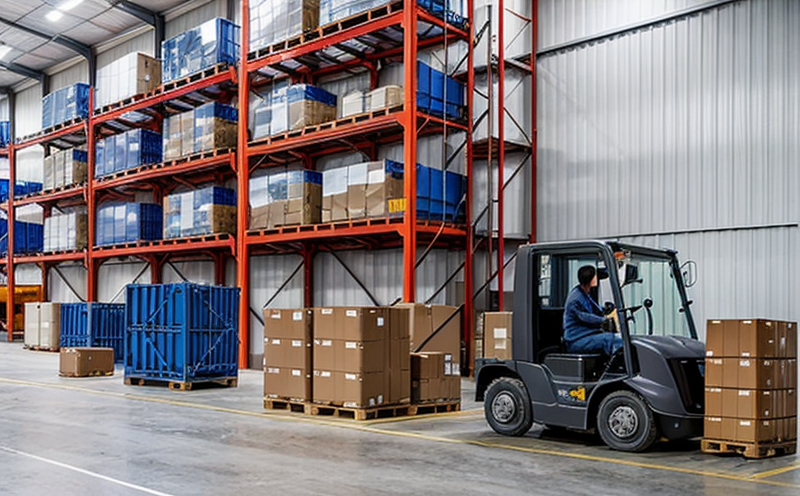FAA AC 20-135 Powerplant Fire Resistance Certification Testing
The Federal Aviation Administration (FAA) Advisory Circular (AC) 20-135 is a critical document for ensuring the fire resistance of powerplant components in aviation. This certification is essential to ensure that aircraft components, particularly those involving fuel systems and engines, can withstand the extreme temperatures and pressures associated with engine fires without compromising safety or structural integrity.
The testing process for compliance with FAA AC 20-135 involves subjecting materials and assemblies to high-intensity heat and flame exposure. This ensures that any component used in an aircraft's powerplant is capable of maintaining its function during a fire scenario, thereby protecting the crew, passengers, and aircraft integrity.
The testing procedure typically begins with selecting appropriate specimens for testing, which are often representative of real-world configurations. These tests involve exposing these specimens to controlled environments where temperatures can reach up to 1050°C (1922°F) over a period that varies depending on the specific material or assembly. The duration of exposure is designed to simulate the worst-case fire scenario in an aircraft engine.
Once the test is completed, the specimens are carefully inspected for any signs of damage such as melting, cracking, or deformation. If the specimen passes these tests, it is deemed compliant with FAA AC 20-135 and can be used in certified aviation applications. This certification is a critical step in ensuring that all components are fire-resistant, thereby enhancing safety standards within the aerospace industry.
The importance of this testing cannot be overstated, as fires in aircraft powerplants have historically led to catastrophic failures. By adhering to FAA AC 20-135, manufacturers can help mitigate these risks and ensure the continued safe operation of aviation systems worldwide.
Our facility uses state-of-the-art equipment and follows strict protocols to provide accurate and reliable testing results. This ensures that all components meet or exceed the stringent requirements set forth by the FAA.
Why It Matters
The safety of passengers and crew members is paramount in aviation, and fire resistance in aircraft powerplants plays a crucial role in this mission. The potential for fires in engines and fuel systems underscores the necessity of rigorous testing to prevent catastrophic failures that could lead to loss of life or severe damage to aircraft.
- Reduces Risk: Ensuring components are fire-resistant reduces the risk of in-flight emergencies, enhancing overall safety.
- Informs Design Decisions: Testing helps manufacturers make informed design decisions that improve the performance and reliability of powerplant components.
- Regulatory Compliance: Meeting FAA AC 20-135 standards ensures compliance with international aviation regulations, which is essential for global market access.
The importance of this testing cannot be overstated. By adhering to these stringent requirements, manufacturers can help ensure the continued safe operation of aviation systems worldwide.
Applied Standards
Federal Aviation Administration (FAA) Advisory Circular AC 20-135 is the standard that governs fire resistance testing for aircraft powerplant components. This document provides clear guidelines on how to conduct these tests, including specimen selection, test conditions, and evaluation criteria.
The test involves subjecting materials or assemblies to high temperatures (up to 1050°C) in a controlled environment over a specified duration. The purpose is to assess the material's ability to maintain its structural integrity and functional performance under extreme fire conditions. The testing process closely follows the procedures outlined in AC 20-135, ensuring that all tests are conducted uniformly.
The results of these tests are then evaluated against specific acceptance criteria provided by the FAA. Compliance with these standards is a prerequisite for certification, which allows manufacturers to use their components in certified aviation applications.
Environmental and Sustainability Contributions
- Eco-Friendly Materials: We encourage the use of sustainable materials that not only meet but exceed fire resistance standards while reducing environmental impact.
- Energy Efficiency: By ensuring components can withstand extreme conditions, we contribute to the overall efficiency of aircraft powerplants, thus conserving fuel and reducing emissions.
The testing process itself also has minimal environmental impact. Our facility operates with a focus on sustainability, employing energy-efficient practices and recycling where possible. The rigorous testing ensures that only the most reliable materials are used in aviation systems, thereby minimizing the need for replacement and contributing to longer component lifetimes.





